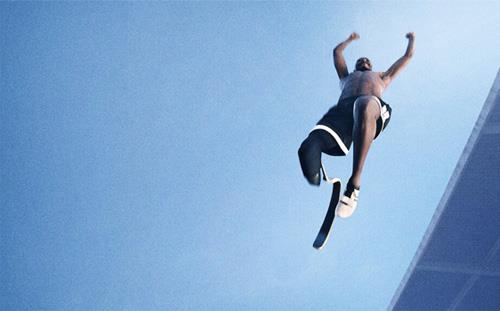
The difference between the Olympics and the Paralympics, Australian swimmer Ellie Cole explains, is that "in the Olympics, all the bodies look the same. In the Paralympics, everyone looks different."
All the athletes in both Games, however, are there for one reason: to compete at the highest level and win.
That's the unsurprising takeaway from Rising Phoenix, a Netflix documentary that premieres Wednesday and provides a welcome burst of upbeat inspiration in a year that has, on television and elsewhere, not always offered a whole lot of that.
Directed by Ian Bonhote and Peter Ettedgui, Rising Phoenix tracks two cycles of the Paralympic Games, London 2012 and Rio De Janiero 2016.
It follows a dozen or so athletes through their preparation and the competition, telling their stories along the way.
It also recounts, briefly but poignantly, the creation of the Games by Ludwig Guttmann, a neurosurgeon who had to flee Germany in the 1930s when Adolf Hitler began purging Jews.
Guttmann had seen the 1936 Berlin Olympics and once he got to safety in Britain, he decided to start Games that would celebrate diversity rather than seeking to exterminate it.
Today the Paralympics are the third largest international sporting event, behind the Olympics themselves and soccer's World Cup.
They didn't get there overnight. At the start of Rising Phoenix, several athletes admit they had heard stories about previous Games and wonder aloud whether they might be running a 100-meter dash in front of 80,000 empty seats.
By showtime, those 80,000 seats are pretty much filled, a triumph noted here by, among others, Prince Harry, who has been heavily involved in promoting athletic competitions for the disabled.
Fittingly, of course, it is the stories and the achievements of the athletes that form the heart of Rising Phoenix.
Jonnie Peacock, a British sprinter, lays out the obvious. When people see a runner with, say, one metal leg, their first question is what happened to his leg. The challenge is to get past that and shift the question to whether he's good enough to win a gold medal.
Toward that end, the athletes here sound precisely the same as the athletes in dozens of other Olympics documentaries. They invariably decided early in life that this would be their goal. They then devoted years to training for it. As the moment approaches, they realize this is the point at which they either fulfill the dream or they don't. It's marvelous drama.
Some of the athletes profiled here win their events. Others do not, sometimes in heartbreaking fashion. That's sports. That's what you sign on for.
The personal stories add the more unique dimension to Rising Phoenix.
Long jumper Jean-Baptiste Alaize (top) lost a leg when he was three years old. He and his mother, from the Tutsi people of Burundi, were attacked by Hutus determined to wipe out all Tutsis. Young Jean-Baptiste was battered with a machete, losing the leg but surviving head and arm wounds. He then had to watch as his mother was murdered.
He ended up in an orphanage. Today, he says, he runs "to escape."
Collectively, it's impossible not to marvel at how these athletes have acknowledged their disabilities and essentially said, "so what." They have found ways to swim, to run, to fence, to shoot archery, to play soccer, tennis, and basketball.
Rising Phoenix focuses more on the stories and the backstories than the competitions themselves, but there's enough to see why 80,000 people would rise to their feet for the finals of the 100-meter dash.
It's elite sport, and watching it is uplifting.